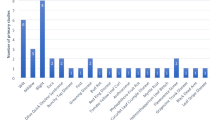Abstract
Most of the previous researchers used manual image processing approach through a public domain tool (ImageJ) to interpret soil surface moisture content. However, the manual processing could not be possible, when the number of images is significantly large. In addition, results could not be reproduced with conventional manual image processing. This technical note introduces a novel technique to automate the quantification process of soil surface moisture content. A stepwise strategy was demonstrated to remove user dependency for soil colour analysis using an autonomous Python script. The images of the compacted soil were captured using a commercially available camera model. The image analysis was conducted using conventional manual image processing approach and newly developed technique. The difference between the mean gray values obtained from the above mentioned two approaches was very low (< 3%). Hence, the newly developed technique is cost-effective and feasible for programming with drones to monitor soil surface moisture content in large areas.



Similar content being viewed by others
References
Deardorff J, W. (1977) A parameterization of ground-surface moisture content for use in atmospheric prediction models. J Appl Meteorol 16(11):1182–1185. https://doi.org/10.1175/1520-0450(1977)016%3c1182:APOGSM%3e2.0.CO;2
Gadi V, Singh S, Singhariya M, Garg A (2018) Modeling soil-plant-water interaction: effects of canopy and root parameters on soil suction and stability of green infrastructure. Eng Comput 35(3):1543–1566
Hong X, Leach MJ, Raman S (1995) A sensitivity study of convective cloud formation by vegetation forcing with different atmospheric conditions. J Appl Meteorol 34(9):2008–2028. https://doi.org/10.1175/1520%200450(1995)034%3C2008:assocc%3E2.0.co;2
Heathman GC, Starks PJ, Ahuja LR, Jackson TJ (2003) Assimilation of surface soil moisture to estimate profile soil water content. J Hydrol 279(1–4):1–17. https://doi.org/10.1016/s0022-1694(03)00088-x
Dabach S, Lazarovitch N, Šimůnek J, Shani U (2013) Numerical investigation of irrigation scheduling based on soil water status. Irrig Sci 31(1):27–36. https://doi.org/10.1007/s00271-011-0289-x
Min T-K, Huy PT (2008) Digital image analysis (DIA) for estimating the degree of saturation of the soil-water characteristic curves (SWCC). J Korean Geotech Soc 24(3):53–63
Yoshimoto N, Orense RP, Tanabe F, Kikkawa N, Hyodo M, Nakata Y (2011) Measurement of degree of saturation on model ground by digital image processing. Soils Found 51(1):167–177. https://doi.org/10.3208/sandf.51.167
Bernard R, Soares JV, Vidal-Madjar D (1986) Differential bare field drainage properties from airborne microwave observations. Water Resour Res 22(6):869–875. https://doi.org/10.1029/wr022i006p00869
Jackson TJ (1993) III. Measuring surface soil moisture using passive microwave remote sensing. Hydrol Process 7(2):139–152. https://doi.org/10.1002/hyp.3360070205
Kumar SV, Dirmeyer PA, Peters-Lidard CD, Bindlish R, Bolten J (2018) Information theoretic evaluation of satellite soil moisture retrievals. Remote Sens Environ 204:392–400. https://doi.org/10.1016/b978-0-12-803388-3.00003-6
Gadi VK, Garg A, Manogaran IP, Sekharan S, Zhu HH (2020) Understanding soil surface water content using light reflection theory: a novel color analysis technique considering variability in light intensity. J Test Eval. https://doi.org/10.1520/jte20180320
Ferreira T, Rasband W (2012) ImageJ user guide. ImageJ/Fiji 1:155–161
Tabor Z, Rokita E (2007) Quantifying anisotropy of trabecular bone from gray-level images. Bone 40(4):966–972. https://doi.org/10.1016/j.bone.2006.10.022
Gadi VK, Manogaran IP, Garg A, Berretta C, Sreedeep S (2017) A novel color analysis technique for differentiation of mix grass cover under shade and without shade in green infrastructures. Adv Civil Eng Mater 6(1):564–582
Gadi VK, Hussain R, Bordoloi S, Hossain S, Singh SR, Garg A, Sekharan S, Karangat R, Lingaraj S (2019) Relating stomatal conductance and surface area with evapotranspiration induced suction in a heterogeneous grass cover. J Hydrol 568:867–876
Gadi VK, Garg A, Prakash S, Wei L, Andriyas S (2018) A non-intrusive image analysis technique for measurement of heterogeneity in grass species around tree vicinity in a green infrastructure. Measurement 114:132–143
Matese A, Toscano P, Di Gennaro S, Genesio L, Vaccari F, Primicerio J, Belli C, Zaldei A, Bianconi R, Gioli B (2015) Intercomparison of UAV, aircraft and satellite remote sensing platforms for precision viticulture. Remote Sens 7(3):2971–2990. https://doi.org/10.3390/rs70302971
van Rossum G, de Boer J (1991) Interactively testing remote servers using the Python programming language. CWi Q 4(4):283–303
Jiang H, Chen S, Li D, Wang C, Yang J (2017) Papaya tree detection with UAV images using a GPU-accelerated scale-space filtering method. Remote Sens 9(7):721. https://doi.org/10.3390/rs9070721
Hirsch R (2014) Exploring color photography: from film to pixels. Routledge. https://doi.org/10.4324/9781315849867
Sural S, Qian G, Pramanik S (2002) Segmentation and histogram generation using the HSV color space for image retrieval. In: Proceedings international conference on image processing IEEE, vol 2. https://doi.org/10.1109/icip.2002.1040019
Van Rossum G, Drake FL (2000) Python reference manual. iUniverse, Indiana
Van Der Walt S, Colbert SC, Varoquaux G (2011) The NumPy array: a structure for efficient numerical computation. Comput Sci Eng 13(2):22. https://doi.org/10.1109/mcse.2011.37
Oliphant TE (2006) Guide to NumPy. Trelgol Publishing, New York
Saravanan C (2010) Color image to grayscale image conversion. In: Second international conference on computer engineering and applications IEEE, 2, pp 196–199. https://doi.org/10.1109/iccea.2010.192
Peters SB, Siemens G, Take WA (2011) Characterization of transparent soil for unsaturated applications. Geotech Test J 34(5):445–456. https://doi.org/10.1520/gtj103580
Garg A, Huang H, Kushvaha V, Madhushri P, Kamchoom V, Wani I, Koshy N, Zhu HH (2020) Mechanism of biochar soil pore–gas–water interaction: gas properties of biochar-amended sandy soil at different degrees of compaction using KNN modeling. Acta Geophys 68(1):207–217
Kumar H, Cai W, Lai J, Chen P, Ganesan SP, Bordoloi S, Liu X, Wen Y, Garg A, Mei G (2020) Influence of in-house produced biochars on cracks and retained water during drying-wetting cycles: comparison between conventional plant, animal, and nano-biochars. J Soils Sediments 20:1983–1996. https://doi.org/10.1007/s11368-020-02573-8
Acknowledgements
The authors declare no competing acknowledgements.
Author information
Authors and Affiliations
Corresponding author
Ethics declarations
Conflict of interest
The authors declare no competing financial interests.
Additional information
Publisher's Note
Springer Nature remains neutral with regard to jurisdictional claims in published maps and institutional affiliations.
Appendix: Python Script for Colour Analysis
Appendix: Python Script for Colour Analysis


Rights and permissions
About this article
Cite this article
Gadi, V.K., Alybaev, D., Raj, P. et al. A Novel Python Program to Automate Soil Colour Analysis and Interpret Surface Moisture Content. Int. J. of Geosynth. and Ground Eng. 6, 21 (2020). https://doi.org/10.1007/s40891-020-00204-3
Received:
Accepted:
Published:
DOI: https://doi.org/10.1007/s40891-020-00204-3




